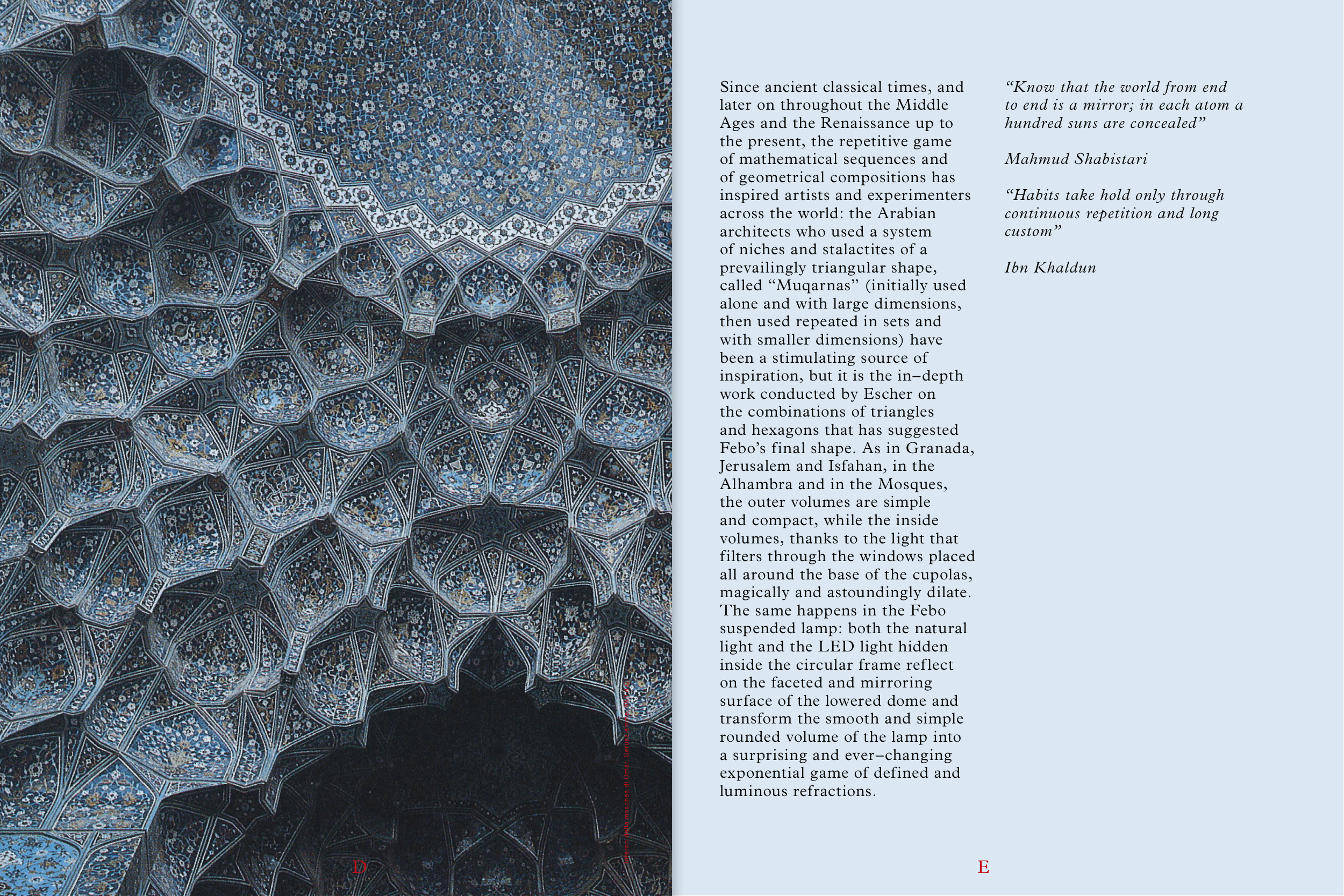Since ancient classical times, and
later on throughout the Middle
Ages and the Renaissance up to
the present, the repetitive game
of mathematical sequences and
of geometrical compositions has
inspired artists and experimenters
across the world: the Arabian
architects who used a system
of niches and stalactites of a
prevailingly triangular shape,
called “Muqarnas” (initially used
alone and with large dimensions,
then used repeated in sets and
with smaller dimensions) have
been a stimulating source of
inspiration, but it is the in–depth
work conducted by Escher on
the combinations of triangles
and hexagons that has suggested
Febo’s final shape. As in Granada,
Jerusalem and Isfahan, in the
Alhambra and in the Mosques,
the outer volumes are simple
and compact, while the inside
volumes, thanks to the light that
filters through the windows placed
all around the base of the cupolas,
magically and astoundingly dilate.
The same happens in the Febo
suspended lamp: both the natural
light and the LED light hidden
inside the circular frame reflect
on the faceted and mirroring
surface of the lowered dome and
transform the smooth and simple
rounded volume of the lamp into
a surprising and ever–changing
exponential game of defined and
luminous refractions.
“Know that the world from end
to end is a mirror; in each atom a
hundred suns are concealed”
Mahmud Shabistari
“Habits take hold only through
continuous repetition and long
custom”
Ibn Khaldun
E
D
Interno della moschea di Omar, Gerusalemme, 690 d.C.


